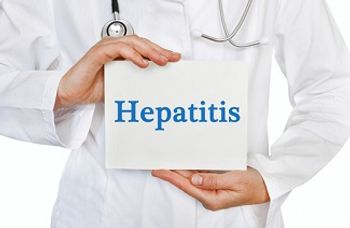
Pipeline of PrEP Alternatives Grows, but There Are No Easy Answers
New research assesses potential alternatives to a daily dose of emtricitabine/tenofovir. It finds mixed results.
This spring, when the United States Preventative Services Task Force
However, a new study published in the journal
“Among individuals who decide to initiate PrEP, demonstration projects and clinical databases suggest that medication adherence is insufficient to provide high levels of HIV protection among select population,” wrote Beymer, of the Department of Health and Mental Health Services at the Los Angeles LGBT Center.
The research team notes that although 1.2 million Americans are believed to be at sufficient risk of HIV to warrant daily PrEP use,
In short, Beymer and colleagues say, additional options are needed. And indeed, many new options for PrEP are in development.
“These options range from alternative dosing of oral products (both existing and novel); injectable preparations; topical products delivered as gels, rings, films, and long-acting/extended release (LA/ER) systems such as microneedles and implants,” they write.
One strategy that’s most readily available is alternative dosing, such as the strategy of taking a double-dose before potential exposure to HIV, and then a single dose 24 and 48 hours later, with additional doses if exposure continues. Such
A number of other pharmaceutical approaches are in various stages of investigation. A combined formulation of tenofovir alafenamide with emtricitabine is currently the subject of a phase 3 study, though it, too, would require daily dosing.
Two injectable drugs, rilpivirine and cabotegravir, have been investigated at potential prophylactic solutions. Each would require a dose by injection every 8 weeks. Phase 3 efficacy studies are ongoing for cabotegravir, but rilpivirine has not yet progressed to phase 3 for PrEP.
A number of other options, such as gels, vaginal films, vaginal rings, and subdermal implants, are also being studied, though all are in the early stages of development. Beymer and colleagues also mention that many drug companies are currently working on broadly neutralizing HIV-1 monoclonal antibodies. The strategy might provide longer-lasting protection, although studies of bNAbs are still in phase 2.
Although considerable research is taking place in order to advance alternatives to TDF/FTC, Beymer and colleagues say regulators have been slow to appreciate the particular difficulties faced by investigators designing trials that test HIV prevention.
“For example, it is more difficult to discern the true efficacy of a new PrEP modality when the control arm allows for daily PrEP or on-demand PrEP,” Beymer and colleagues write. “Novel trial design strategies, including counterfactual analyses that try to estimate hypothetical untreated/placebo incidence in the same or a similar population, will be paramount to the feasibility of studying new interventions.”
Unfortunately, they say, statistically sound but creatively designed trials have faced skepticism from regulators.
Even if new modalities and HIV-prevention strategies are approved, Beymer and colleagues say the solution to HIV transmission will still require
“[D]ecision-making about whether to use these new PrEP modalities will depend on individual-level, interpersonal-level, community-level, and structural-level factors that must be considered in future research,” the investigators concluded.
Newsletter
Stay ahead of emerging infectious disease threats with expert insights and breaking research. Subscribe now to get updates delivered straight to your inbox.






























































































































































































































































































